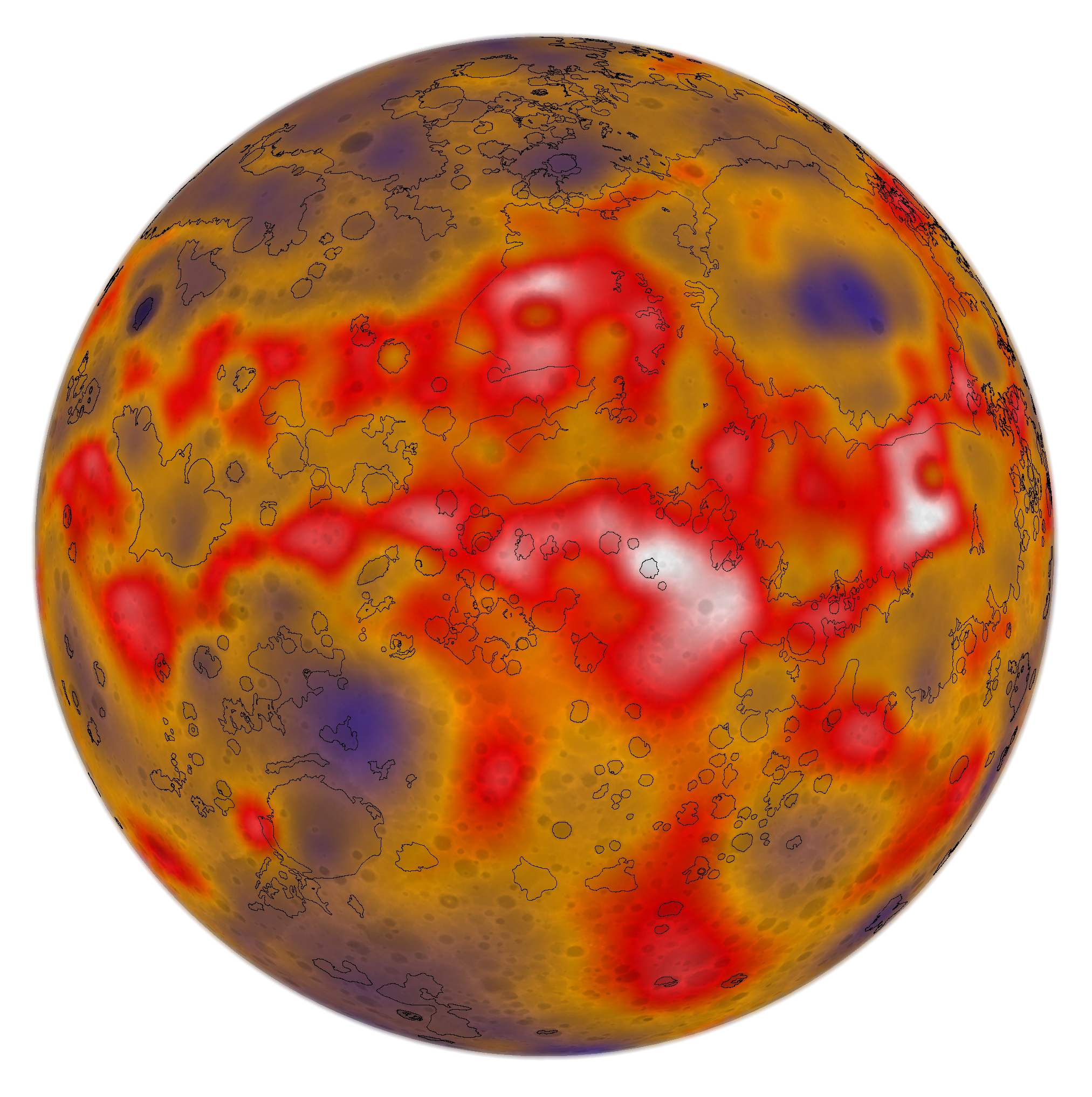
I particularly like this story because it shows that sometimes amazing research can come even a decade after data has been collected. Researchers led by Thomas R. Watters have combined images, topography, and gravity data obtained by NASA’s MESSENGER mission to model how that small world’s crust is moving.
Here on Earth, our planet’s surface is divided up into a lot of different plates that move over, under, and around each other while floating on the liquid plastic mantle. Volcanoes crop up along the plate boundaries as well as faultlines that can appear as collections of cracks in the Earth when seen from above.
On Mercury, there aren’t plates; there is a plate – the singular crust that surrounds Mercury’s shrinking interior. It was expected that faults would be random in their locations. MESSENGER discovered, however, that the faults cluster in belts. According to Watters: On a one-plate planet like Mercury undergoing mostly global contraction from cooling of the interior, the concentration of large faults into elongated belts is not expected. Some process in combination with global contraction is influencing the grouping of the faults.
By modeling the surface and interior together, the team was able to sort out that the faults are clustered where Mercury’s uneven crust is thickest and the strain on the crust is greatest. This kind of intra-plate fault also happens on Earth, with the New Madrid fault in the Midwest of the U.S. being one of the most famous. That fault triggered massive quakes in Missouri in 1811 and 1812.
The discovery of these clustered faults and the new understanding that they are tied to Mercury’s crust and shrinking interior makes me wish we could drop some seismometers on Mercury to see if that complex world is tectonically interesting.
More Information
Smithsonian press release
“Mercury’s Crustal Thickness and Contractional Strain,” Thomas R. Watters, Peter B. James, and Michelle M. Selvans, 2021 August 30, Geophysical Research Letters




 Join the Crew!
Join the Crew!
 Escape Velocity Space News
Escape Velocity Space News
0 Comments